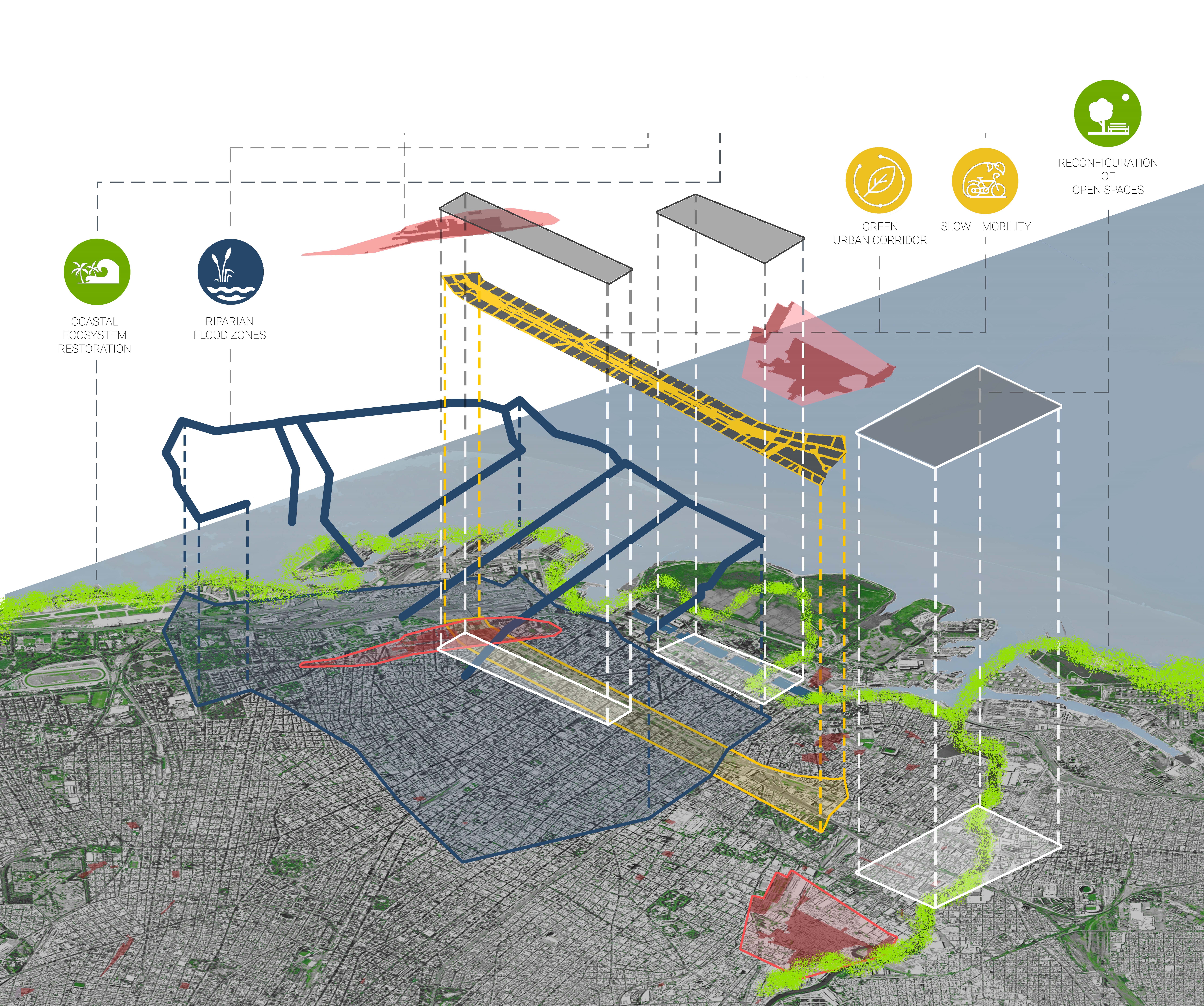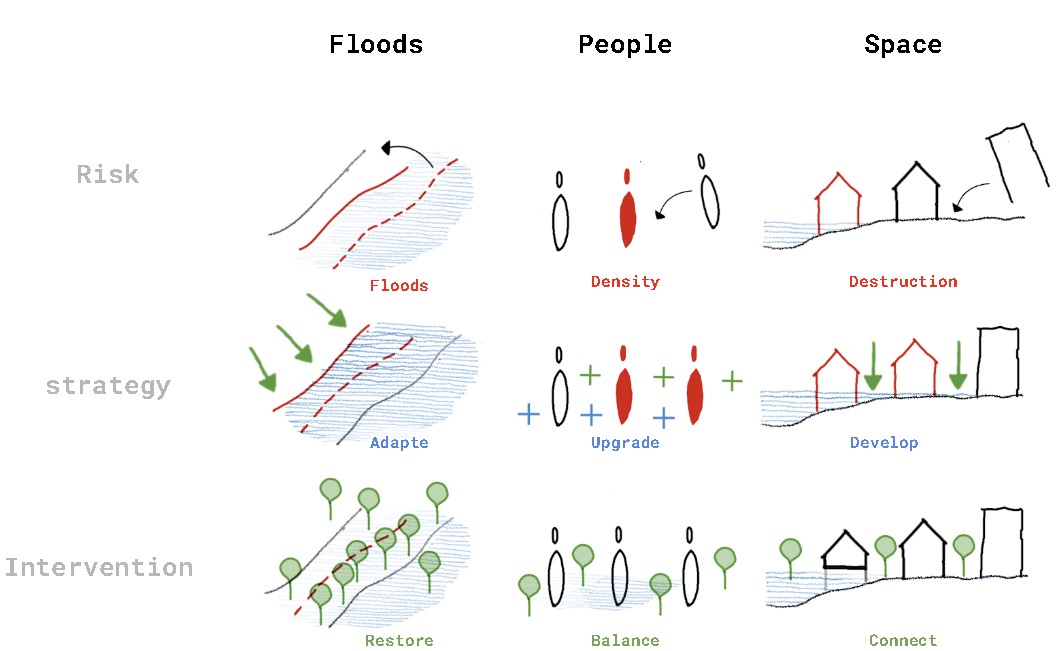
Credits: Vicky Wang, Valparaíso, Regional Planning
The world is facing a moment of growing climate and migratory uncertainty. The accelerated intensity of natural and humanitarian disasters is giving rise to new and more complex forms of vulnerability. Migration has acquired an unprecedented dimension, while the infrastructure that will respond to climate displacements remains unanswered. While current estimates account for 250 million international migrants, predictions indicate that by 2050 this number will increase to 350 million, of which 60% will have been displaced due to environmental factors. Rising sea levels, changes in rainfall distribution patterns and in ocean chemistry will strongly affect coastal cities, where 77% of the at-risk global population resides. The climate crises also accentuate inequalities, as the most vulnerable groups are the more exposed to the effects of environmental hazards. In the near future, the landscape of informality will be a direct reflection of the effects of climate change and its intensified migration.
This 1-week workshop, “ECOLOGICAL DESIGN FOR INFORMAL SETTLEMENTS CLIMATIC ADAPTATION”, will take place in October 2022. Students will work in the precarious neighbourhood Rodrigo Bueno in the city of Buenos Aires with the objective to plan, design and speculate on the ecological infrastructure needed to integrate vulnerable settlements into the formal city. Argentina is one of the most urbanized countries in Latin America, with more than 92% of its population residing in urban areas. The country faces housing deficits due to a lack of affordable housing for low-income groups. Informal settlements, known in Argentina as Barrios Populares, along with self-builds, typify housing for the population not served by the formal market. Barrios Populares are characterized by their lack of basic services and quality public spaces and by the low quality of housing. They are typically located in outlying areas and built on land that is residual, contaminated, or exposed to natural or climate risks.
The Argentinean government, together with a large number of civil society organizations, has conducted The National Survey in Barrios Populares for the first time in 2016 (RENABAP). In 2022, the RENABAP revealed there are around 1.168.000 households living in barrios populares, representing around 5,3M people. In the City of Buenos Aires, there has been a significant increase in the number of Argentinean and migrant households residing in barrios populares, due to three main causes: (i) increase in the flow of households to the barrios, (ii) difficulties in reducing the existing number of households in barrios; and (iii) barriers to socio-urban inclusion.
During this workshop, students will work in the Barrio Rodrigo Bueno, located on the Rio de la Plata coastline, in a strategic spot, next to Puerto Madero and to a unique land within the city, a conservation are (the Ecological Reserve). There are round 1.000 families living in Rodrigo Bueno, and more than 63% of its inhabitants are immigrants. The most relevant threats are both fluvial and coastal flooding due to its location within the Matanza Riachuelo basin.







